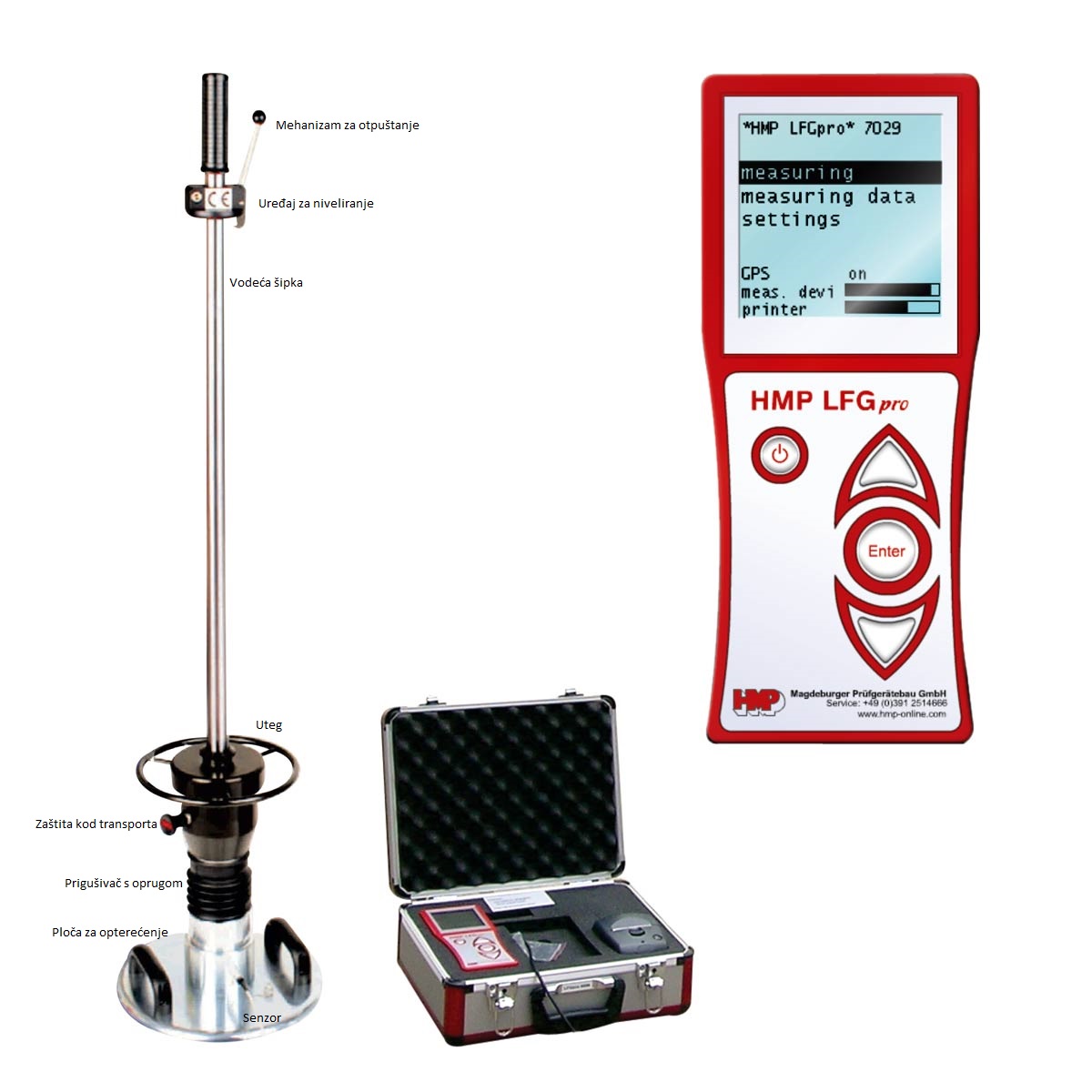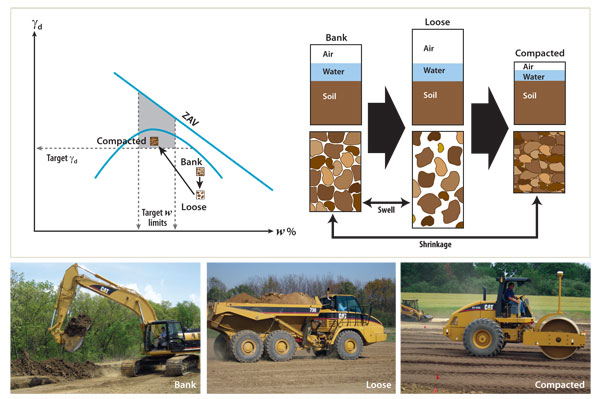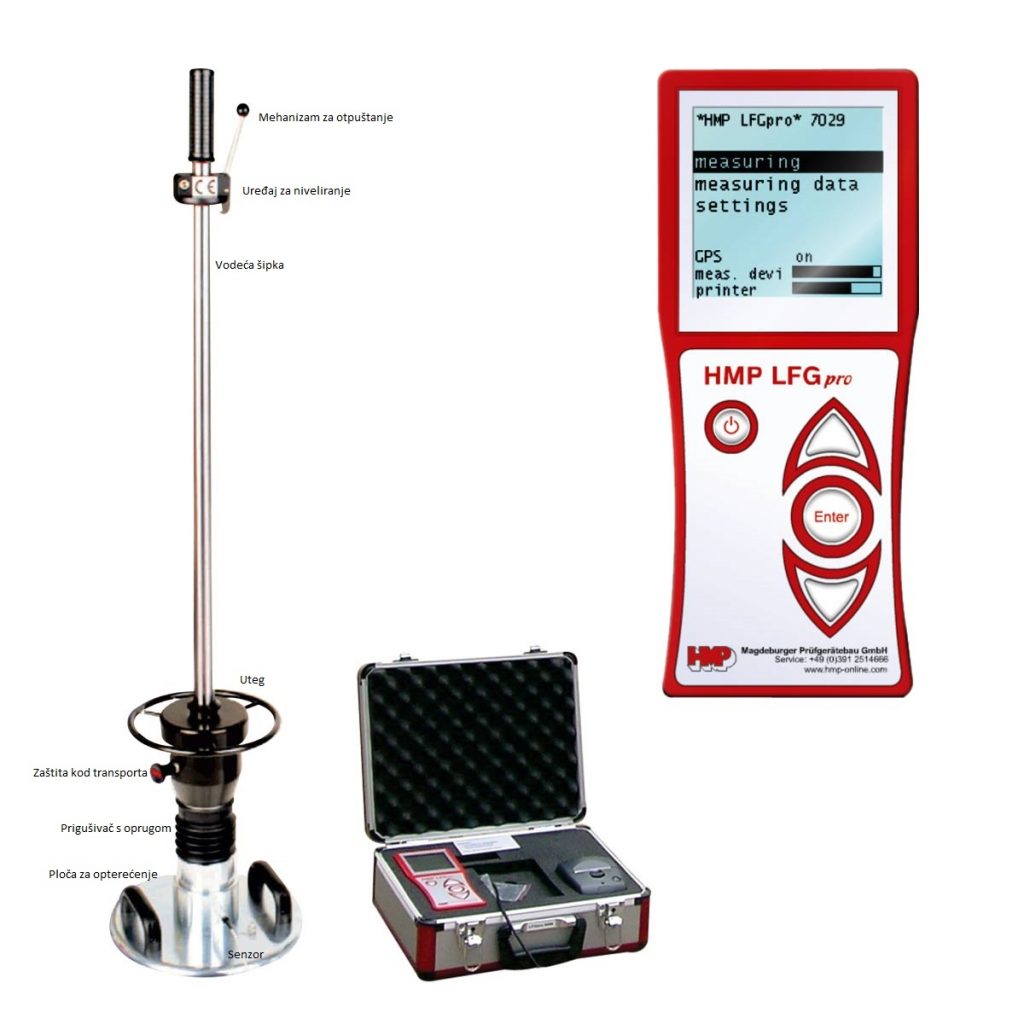Dynamic plate – ideal tool for determining soil constrained modulus
Dynamic plate
For the beginning, let us consider a hypothetical scenario. A building has been constructed, e.g. a business warehouse. The new owner has begun noticing cracks in the walls and even a light-leaning of the building after a certain time. The problems are probably large settlements of soil under the building’s foundations. In that case, the building is unsafe for use and the owner has a double financial loss – determining and remediation of a troublesome area and inability to conduct business in the warehouse.
What to do in order to prevent foundation settlement? Certainly, it is necessary to know the soil on which you are building by conducting a geotechnical investigation and one of the significant characteristics of foundation soil is its compaction. During compaction, soil particles align and total soil porosity is reduced. Level of compaction depends on many factors – a type of compaction machine, deformability, water content, soil type, etc.
• Schematic representation fo compacted and loose soil
Let’s get back to our warehouse from the beginning. A quick, simple and financially feasable dynamic plate test will provide needed information so that the investor can be sure that the soil is sufficiently compacted. With this test ( dynamic plate ) it is possible to obtain field information about the dynamic modulus of deformation (Evd) in a short time. The obtained modulus can be calculated into a static constrained modulus (Ms).
Gear for the dynamic load plate test consists of a lightweight deflectometer and instruments for measuring elastic soil settlements.
• Schematic representation of a dynamic plate
The dynamic modulus Evd is obtained using the following equation:
where:
• r = load plate radius
• = load under the plate (N/mm2)
• s = deformation amplitude (mm)
• 1,5 = factor that involves multiple laws that have to be taken in to account when using the circular plate
Correlation relationships of dynamic (Evd) and static (Ms) soil modulus are as follows:
• Granular soils – Evd ≤ 30 Mpa – Ms = 1,75 (Evd – 10)
• Cohesive soils – Evd ≤ 30 Mpa – Ms = 1,16 Evd
– Evd > 30 Mpa – Ms = 1,42 (Evd – 30) + 35
The measurement process is completely digitized. On one location it is possible to conduct up to 10 measurements in a period of 30 minutes. Results can be obtained on site (with a field printer) and a more detailed report with recommendations can be made at the office.
After a conducted dynamic load test ( dynamic plate test ) the investor can sleep soundly since he obtained the information about the level of soil compaction and its impact on the warehouse in the future.
This kind of investigation is recommended as a immediate control during the execution of embankments, foundation soil replacement and pipe beddings. Taking into account the time and cost it is also recommended for smaller and private structures.
Geotech d.o.o. is conducting dynamic load plate tests, according to norm ASTM E2835 – 11. Tests are conducted with a deflectometer under the name “The Light Weight Deflectometer HMP LFG4”, produced by HMP Magdeburger Prüfgerätebau GmbH.


